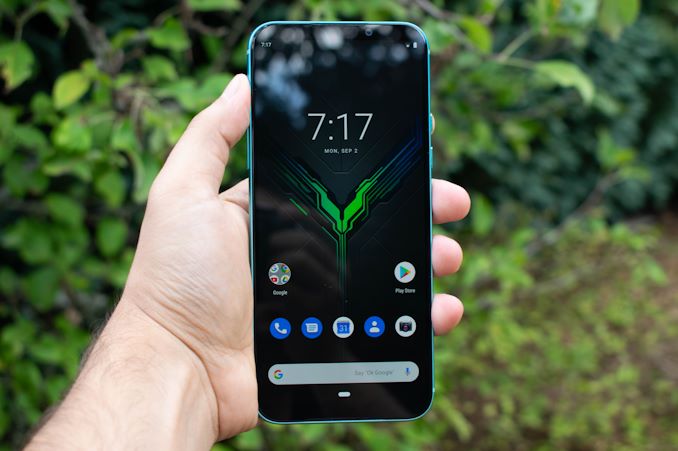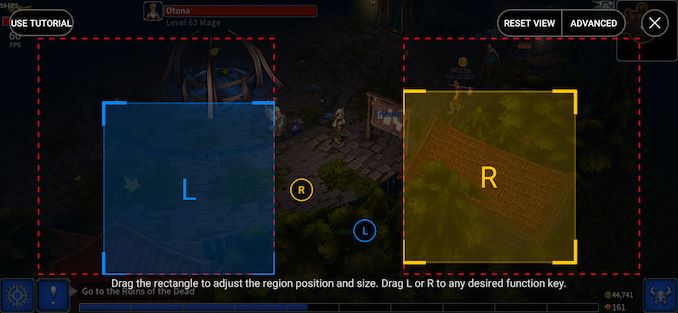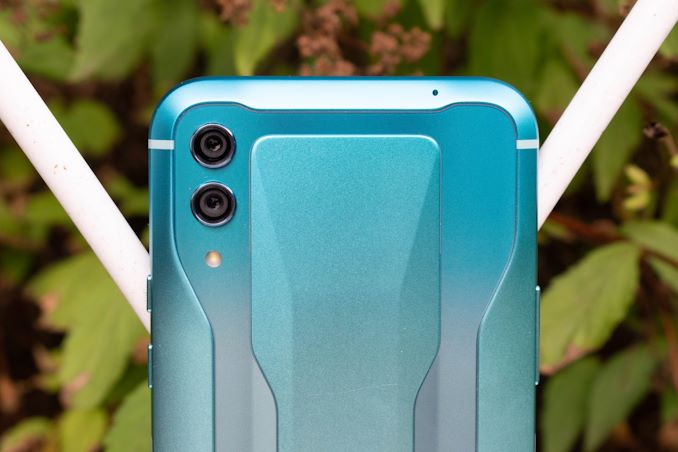The Black Shark 2 Review: A Gaming Phone's Existential Crisis
by Andrei Frumusanu on September 25, 2019 8:00 AM EST- Posted in
- Mobile
- Smartphones
- Xiaomi
- Snapdragon 855
- Black Shark 2
Conclusion & End Remarks
The Black Shark 2 is actually the first “gaming” phone that I’ve gotten to dedicate a review to. Going into the review I had a few preconceptions of what this means and what the basic checkmarks of what a gaming phone should be and what it should deliver.
First of all, in terms of design, the Black Shark 2 does put a checkmark on its “gaming aesthetics”, and the accentuated modern design elements of the phone very much remind one of the typical gaming products that consumers are accustomed.
The build quality of the phone is excellent and feels very solid; it’s also of a reasonable size and weight – keeping the size in check with delivering a gaming phone experience in a 75mm wide form-factor.
The Black Shark 2’s 6.39” AMOLED screen is quite adequate and should satisfy most users, albeit it doesn’t showcase any particular strengths and its colour calibration also seems to have larger weaknesses.
The best thing about the display is actually the touch input controller that operates at a higher-than-usual 240Hz, something that’s particularly noticeable in the scrolling latency of content and surely would also help in the touch input latency of games.
On the software side, I wasn’t too convinced of the value of the Shark gaming suite. In essence, it’s just a glorified launcher UI with a lot of gimmicks. The one real benefit I found to be actual a practical feature is the “MasterTouch” feature which allows you to map two pressure sensitive areas on the screen to two new additional adjustable UI functions in a game, essentially enabling you to turn in-game analog sticks to also serve as click-buttons, much like on a real controller joystick.
The cameras on the Black Shark 2 just aren’t very good. I had expected the phone to at least match the very good daylight processing of the Xiaomi Mi9, but alas that’s not the case, and the BS2 just doesn’t offer the same more consistent and superior camera calibration and post processing. It has worse exposure, colour balance, and details, especially on the zoom module that showcases a detrimental contrast and sharpening filter.
In low-light, the phone is actually even worse than the Mi9 due to the fact that it lacks the dedicated night mode. It’s in essence the worst camera I’ve tested in recent years.
A Gaming Phone's Existential Crisis
I mentioned I had preconceptions of what a gaming phone should be able to deliver, and the one aspect that I would value above all others in such a product, is the gaming performance that it's able to deliver.
On the CPU side of things, the BS2 fares quite OK and is about average to a little below average compared to other Snapdragon 855 devices. The benefit of this more conservative tuning is the fact that it does quite well in terms of battery life, and its 4000mAh battery does showcase itself as an advantage compared to other devices.
In terms of gaming/GPU performance, the Black Shark 2 is simply an utter disaster and an embarrassment of a device. The matter of fact here is that the phone ended up with the single worst sustained performance of any Snapdragon 855 phone in the market. The phone’s thermal throttling is very aggressive, and though it’s able to maintain very reasonable skin temperatures, it comes at a great cost of performance.
The problem here is that Xiaomi continues to try to mislead its customers as to the real performance of the phone – the firmware detects benchmarks and disables thermal throttling in order to get better scores. In this scenario of course it showcases excellent performance, but I stopped the phone in its tracks after it had reached an excess of 57°C, at which point it was uncomfortably hot to hold. The issue isn’t new to the Black Shark 2 as last year’s Black Shark behaved the same – showcasing great cheating behaviour while its real performance was just lacklustre.
Here’s the thing, the Black Shark 2 isn’t all that cheap, coming at a minimum of 549€ for the base storage model. For a phone which completely fails at the very thing it’s designed for, I can’t see how one would able to justify its purchase. The cameras are massively underwhelming, and the display is also lacklustre compared to other phones. The only redeeming features of the Black Shark 2 remains its 240Hz touchscreen, the MasterTouch feature, and above-average battery life.
Currently I just don’t see how the BS2 can justify its existence over any other regular non-gaming phone, the compromises and disadvantages vastly outweigh the one or two features which actually do benefit the phone.













63 Comments
View All Comments
Flunk - Wednesday, September 25, 2019 - link
I'd take "gaming" phones more seriously if they actually had better hardware instead of just having obnoxious styling like this thing. I feel like that won't happen because of the way SoCs are developed, so we'll just see more of these cynical products.wrkingclass_hero - Thursday, September 26, 2019 - link
So it has finally come to paid reviews... this will not end wellAndrei Frumusanu - Thursday, September 26, 2019 - link
It will end come Monday.Galcobar - Thursday, September 26, 2019 - link
Xiaomi might agree with your sentiment, since Qualcomm paid for a review which called out deceptive practices, poor design, and significant under-performance by a Qualcomm client. Clearly, the payment did not include guarantees of positive coverage or control over the published results. Xiaomi is probably wishing this review hadn't happened, but it does seem to establish the Independence of Anandtech editorial staff to publish a negative review even when sponsored.PeachNCream - Thursday, September 26, 2019 - link
Pretty much this stuff. It's really hard to question AT's integrity with this particular paid review given the results do not paint the phone in question in a very good light. Will that always be the case? Dunno, but I think probably, yes it will.Imran-Shaikh - Thursday, September 26, 2019 - link
What benefits AT had through these paid reviews?Money or anything else?
Thanks in advance.
Badelhas - Thursday, September 26, 2019 - link
What do you mean?Average James - Friday, September 27, 2019 - link
I just ran Slingshot Extreme Unlimited on my own BlackShark 2 with explicitly turned off thermal throttling and maximum speed setting [4] as Gamer Studio allows to tune the option.With GPU overlocked via Caller hidden menu, I marked 7100~ish Graphics and 4100-ish Physics which seems legit to its clock setting. While that, the temp marked through 35~38C.
And then, I voluntary set Gamer Studio level to [2] which actively uses Silver Cores for battery and heats for non-3D heavy games. the result is similar to the article.
So I wonder, Mr. Andrei might misunderstood about CPU/GPU governor stuff. On Auto setting, it seems natural that SW detects what kind of game or apps which requires how much 3D/CPU power to get most favorable results. Like nowdays modern VGA drivers are doing.
Average James - Friday, September 27, 2019 - link
I can understand you're blaming detecting benchmarks software to turn off thermal throttling as a reviewer. It's generally evil thing to trick customers. BUT this device offers various performance levels through it's exclusive Gamer Studio menu and even allows to set thermal throttling level if you want.So what I cannot get from your article is, it doesn't talk about it's real performance. This is just complaining about "Poor performance in Auto perf setting if an App is not registered properly as it uses lower performance (seems level 2) level."
s.yu - Friday, September 27, 2019 - link
"if an App is not registered properly"If "real" performance mandates that apps "register" properly, how can you ensure that every game is registered properly then, if "registration" doesn't depend on a load detection?